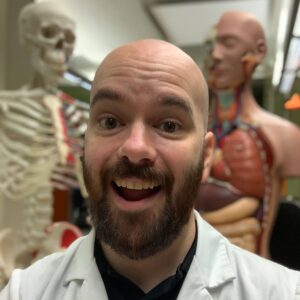
Siebert Science
Welcome to Siebert Science! My name is Justin Siebert, and I have taught science for over a decade: primarily Anatomy & Physiology, Physics, and AP Chemistry. I started making videos for my students, and currently I’m creating Anatomy & Physiology videos (and other resources) on topics covered from high school through medical school.
In this video, I describe the three types of cardiac tissue, explain the cardiac conduction system piece by piece, then map out what is happening in the heart during each stage of an electrocardiogram. The video covers these structures: sinoatrial (SA) node, internodal pathway, interatrial pathway, atrioventricular (AV) node, atrioventricular bundle (bundle of His), bundle branches, Purkinje fibers, P wave, PR interval, QRS complex, ST interval, T wave, ventricular contraction, atrial contraction, and heart sounds.
This outline covers the key components of the Renin-Angiotensin-Aldosterone System (RAAS). It begins with an introduction to homeostasis and how the body maintains internal balance. Stimuli like low blood pressure trigger sensors in the body to activate the RAAS pathway. The synthesis of angiotensin II and the role of effectors like aldosterone and others are explained next. Finally, it discusses how RAAS regulates glomerular filtration, followed by a recap and a lighthearted ending.
The shoulder joint, also known as the glenohumeral joint, is a ball-and-socket joint that allows a wide range of motion. It is formed by the articulation of the humerus (upper arm bone) with the scapula (shoulder blade), specifically the glenoid cavity. Key ligaments like the coracohumeral and glenohumeral ligaments provide stability to the joint. Surrounding muscles, including the deltoid, rotator cuff group (supraspinatus, infraspinatus, teres minor, subscapularis), and trapezius, enable movement and support. This complex anatomy balances mobility with the need for joint stability.


